New awesome prints @ Edition Copenhagen///
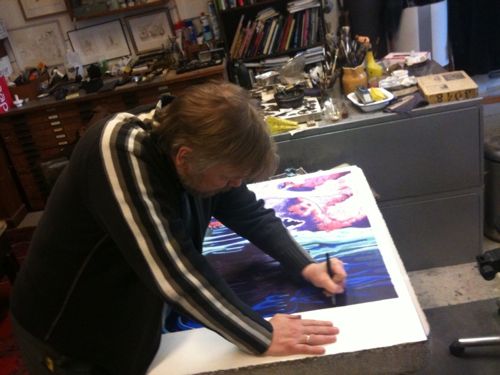
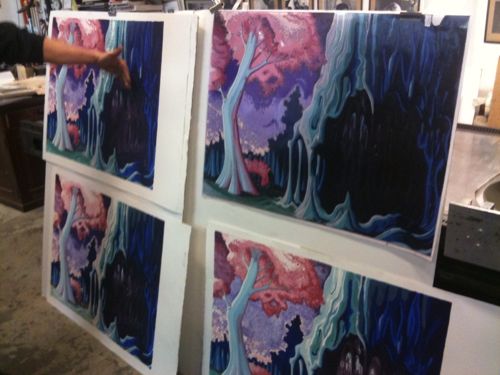
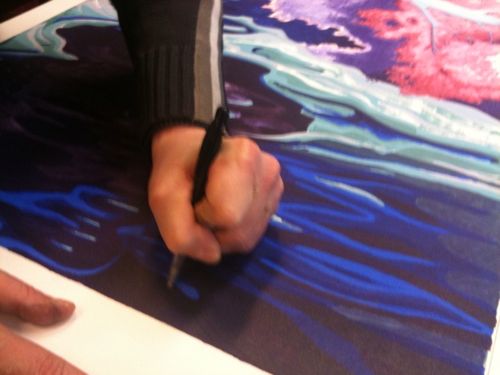
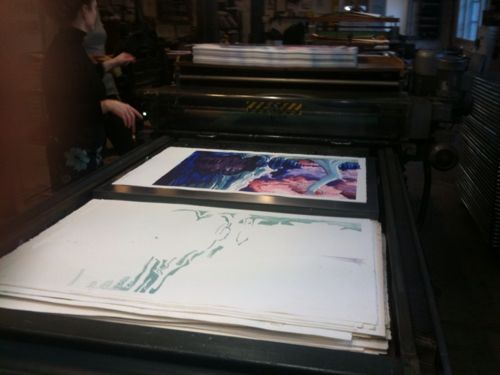
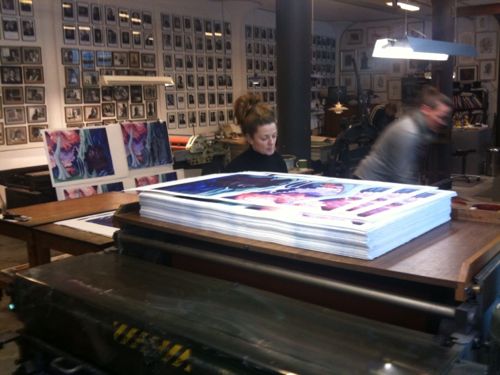
New walls:::
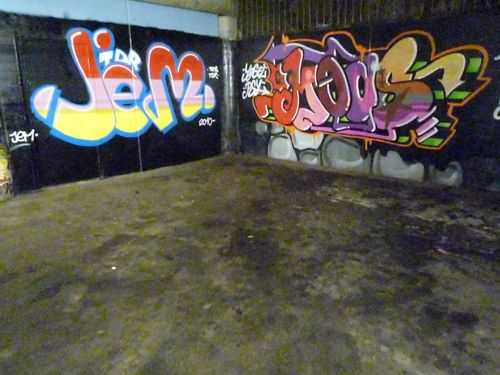
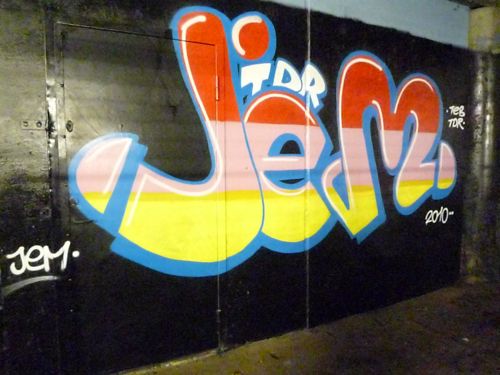
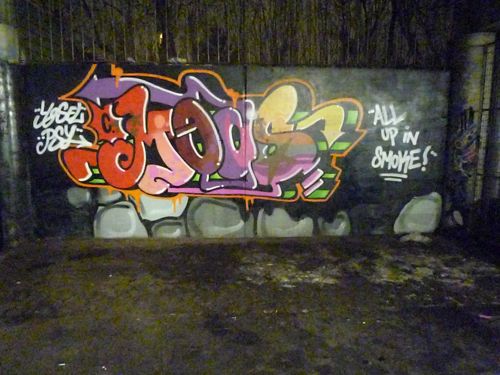

Galleri Christoffer Egelund is proud to present the German artist Thomas Palme’s first big solo exhibition in Denmark, Lost or Damned! In this exhibition Palme will present a series of new black/white pencil drawings and a small installation. The title of the exhibition, Lost or Damned!, refers directly to Søren Kierkegaard’s famous book whose Danish title is Enten – Eller (Either – Or), and points towards the artist’s existence. Like everybody else, he has to find his own way in life. Visitors to the exhibition will be presented with, amongst others, portraits of artists and philosophers with animals’ heads, for instance Gérard de Nerval, Vincent van Gogh and Arthur Schopenhauer. Most of these were hesitant in their approach to life and had a good deal of experience with anxiety, trembling and quivering. As Palme himself describes it: “Most of them only had to decide between: to be Lost or Damned”. The animals’ heads refer to the persons’ real character and the eternal connection between artist and nature and life’s merciless circle from birth to death. Through quotes in the works it becomes clear that Palme moves between and combines elements from the metaphysical, historical, scientific, religious and philosophical spheres. This crossing is not just a quest for answers to existential questions, but also an opening to change where new opportunities emerge.
The black/white pencil drawings which make up the majority of Palme’s practice are created with both the right and the left hand at the same time, creating an altogether unique energy and dynamism which in a compelling way unfolds in the area of tension between fine portraits and chaotic abstraction. There is a multitude of forces and energies at work and mutually at odds in Palme’s works. There is always a fight going on between what we can understand or identify as part of our history and what is shrouded in mysticism.
Thomas Palme (b. 1967) was educated at Vienna, Munich and Düsseldorf. He has received, amongst others, the ‘New Talent’ award at Art Cologne in 2006, and most recently he received a scholarship from Kunsthalle Krems in Austria, where he will also have a solo exhibition in 2010. Most recently, Thomas Palme has exhibited at the Museum of Art in Nocciano, Italy, Landesmuseum für Kunst und Kulturgeschichte, Schleswig-Holstein, Overbeck-Gesellschaft in Lübeck, Kunsthall Moosalpe, and he is represented at such collections as Pinakothek der Moderne’s permanent art collection in Munich.
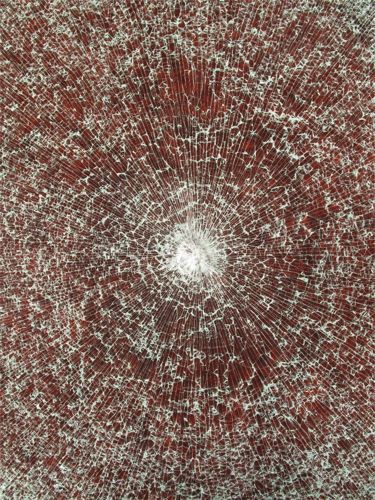
Bortolami is proud to present the third solo show by Michel François. For this installation François exhibits the third in a series of works called Pavilion Interface.
The pavilion is a large cubic glass box which becomes the stage of a private performance by the artist; what the audience sees in the gallery is the consequence of his actions. A cube of multi-colored plasticine modeling clay sits in the center of the box and prior to the opening François aggressively splatters handfuls of the plasticine onto the glass walls. For more than twenty years Michel François has been creating installations using sculpture, photography, film and video. It has been written about his very recent show at SMAK: “[it] is conceived like a journey through the material processes of human inventiveness and creativity. Endlessly recycling discarded materials, elemental resources and seemingly valueless matter this exhibition shows how we both make and unmake the human world we inhabit and how this reflects the simple beauty and essential fragility of humanity.”
Michel François was born in 1956 in Saint-Trond, Belgium. Recent solo exhibitions include SMAK in Ghent, Belgium and Hespérides I, Musée des Beaux-Arts. Frac Haute-Normandie, Rouen; Frac Aquitaine, Bordeaux, France; CC, Belgium; Maison de la culture d’Amiens, France; Art Pace Foundation, San Antonio, Texas; De Pont Museum of Contemporary Art, Tilburg, The Netherlands; Space Vox, Montreal; CCA Kitakyushu, Japan; Westfalischer Kunstverein, Munster, Germany; Centre George Pompidou, Paris; Center for Photography, Geneva, Switzerland and Fondatión Miró, Barcelona; Kunsthalle Bern, and Haus der Kunst, Munich. François’s work has also been included in numerous group exhibitions such as, “Recent Video from Belgium,” Philadelphia Museum of Art, The 49th Venice Biennale – where he represented Belgium together with Ann Veronica Janssen, the São Paolo Biennial XXII, and Documenta IX. The artist currently lives and works in Brussels.
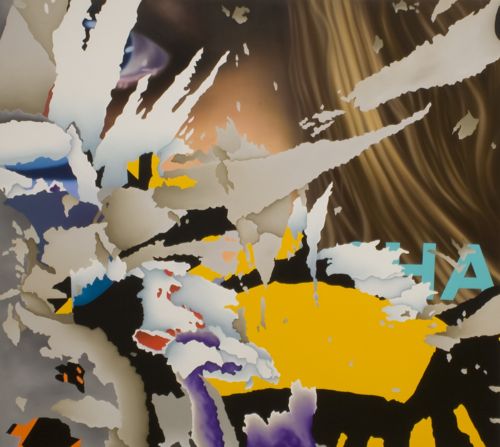
The recent work of Peter Mohall takes the starting point from two paintings he made in 2007, “Studio View no.1 and no.2”. When allocated a temporary, unpainted studio at the Academy, there were bare walls built with composite wood plates – Oriented Strand Board.
Mohall was fascinated by the turmoil in the structure of these walls. Close-up photographs of the small details were transferred and enlarged on the canvas, with a Gerhard Richter-blurred photorealism. The image was limited to shades of green, to give the impression of a forest landscape. The intention was to create a virtual loop in a visual manner, taking the painting back to the source of its motif – the forest.
.
Mohall further extended this project to another series of paintings with the title “Faux Bois”, a reference to the traditional craft of imitating wood-grain. Instead of the norm of imitation of expensive hard woods, he utilised one of the cheapest kind – OSB. The motif is similar to the previous series, though the approach is changed to a more broad use of different painting applications and multiple colours.
In “Faux Bois” the image-composition is investigated through chaos theory. An intuitive system of colour-fields is arranged throughout the canvas to shape the landscape that appears from the almost absolute chaos of the structure within the OSB. A similar phenomenon to cloud spotting, where imaginary figures appear in the sky to the viewer.
“Studio View” and “Faux Bois” are pure studio-based works, where the act of painting is performed, and the motif is excavated within the studio. This working manner resembles the approach of Piet Mondrian with his wall-works, where he also merged the studio into the process of painting, making the project an enclosed environment.
The last year, Mohall has done the opposite and ventured outside in the sourcing of motifs. He has been working with a new project called “Fractal Figuration”. The paintings maintain the fractal imagery that characterizes his former work and place it in a new context. He uses the aesthetics familiar to Jacques Mahé de la Villeglé of the Nouveau Réalisme, using photographs of decayed posters as model, a sort of ready-made décollage
Though all three series are painted after photographic drafts, “Studioview” and “Faux Bois” are perceived as non-objective paintings, this time he turns towards the margins of the figurative. “I’m interested in the deconstruction of the motif’s ability to relate to abstract imagery. While ”Fractal Figuration” obviously is representative, it still has elements resembling abstract works of, for example, Kandinsky and Schwitters.”
The work of Peter Mohall is based on deconstructed motifs. With loose collections of related fragments, the paintings have the characteristics of the architecture conceptualized by Jacques Derrida, Deconstructivism,
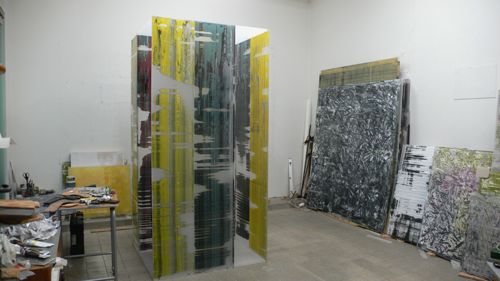
For the last 30 years Håkan Rehnberg has methodically explored space and flatness in his painting. His choice of plexi-glass is an acknowledgement of the physical properties of the object on which he paints: plexi is a screen, an object and a frontal plane. For Rehnberg the decisive moment of painting, full of contradictory impulses, intuition and intention, is one of exposure and vulnerability.
With broad strokes, defined by a plasterer’s palate, Rehnberg draws out planes of colour, carving out spaces. In a process of layers he both reveals and conceals, leading to what can be seen as a flattened architecture – an inaccessible room.
The inaccessible room is both a physical place and a conceptual site. In his sculptures the room becomes almost inhabitable, sometimes inviting shelter and yet providing none. Often a closed space with only visual access, the sculpture recalls an eddy in a river – a recurring thought.
In this exhibition Rehnberg continues to explore these themes in new directions. Two works suggest a forensic archaeology – a scraping away to the white “bone” under the surface. Another painting reveals a frenetic scratching in a swarm of gestures.
The form of a beehive occurs repeatedly in the new works and combines the concept of the inaccessible room with the elements of revealing and concealing. The yellow, scented, beeswax is both painterly and sculptural.
Håkan Rehnberg will represent Sweden at the Sydney Biennale in May this year. He recently received great attention for his contribution to Åtta Kommentar in the Caspar David Friedrich exhibition at National Museet. He has exhibited widely both in Sweden and internationally, including Charlottenborg Kunsthal, Copenhagen, Studio A, Otterndorf, Museum gegenstandsfreier Kunst (Germany), Sønderjyllands Kunstmuseum, (Denmark), Reykavik Art Museum (Iceland), Helsinki City Art Museum (Finland), Centre Culturel Suédois (France). Venues in Sweden include Moderna Museet, Malmö Konstmuseum, Millesgården, Eskilstuna Konsthall, Rooseum, Wanås slottspark, and Liljevalchs Konsthall. Håkan Rehnberg was born 1953 in Göteborg. He lives and works in Stockholm. This is his fifth exhibition at Galerie Nordenhake.